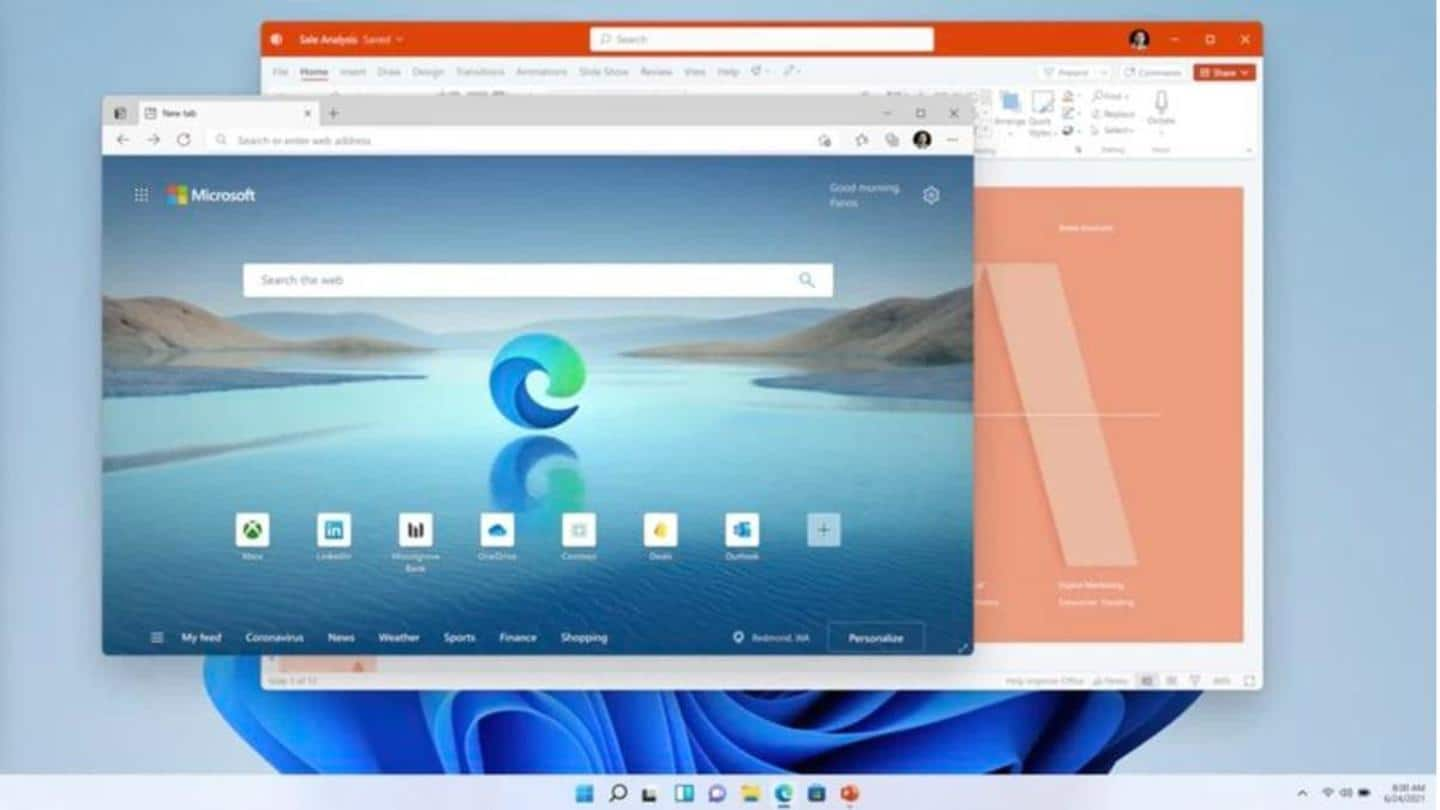
How to change your default browser on Windows 11
What's the story
Microsoft retired Internet Explorer earlier this year in favor of its Chromium-based Edge browser ahead of Windows 11's debut. However, the operating system will make your life difficult if you prefer using third-party browsers.
On Microsoft's new system that associates file types with default applications instead of using toggle switches in Settings, here's how you can tediously switch to your preferred browser.
Protests
Windows 10 desperately promotes Edge when you switch default browser
When one downloaded and installed Chrome or any other third-party web browser on Windows 10, Edge browser and the Settings app displayed several "are you sure" prompts and advertised Edge's not-so-unique features before finally allowing you to change the default browser.
On Windows 11, Microsoft only asks once about your default browser preference and if you miss it, switching browsers isn't so easy.
Do you know?
Switching to Firefox on Windows 11 is surprisingly easy, though
Interestingly, when you click on the "Set as default" button on Chrome, you are redirected to the correct Settings page to execute the steps listed ahead manually, but for some reason, Mozilla Firefox's (also Chromium-based) "Set as default" button works flawlessly.
Won’t ask twice
Windows 11 almost forces users to stick to Edge
To encourage (or force?) users to continue using Edge, after installing a fresh copy of Windows 11, you will be asked to pick your default browser by selecting "Always use this app" against your preferred browser.
In case you choose wrong option or want to use a different browser, install it and then navigate to Start > Settings > Apps > Default Apps.
How-to
Changing default browser must be done for each file format
Then, scroll and select the browser you want to use as the new default (say, Chrome). Select it and scroll down to "HTTPS" and click the name of the current default browser (Edge).
From the pop-up menu that appears, select Chrome (or your preferred new default browser) and click OK. The defaults should have changed for HTTP files as well.
Additional steps
Windows Search, widget links still open in Edge browser
If the defaults didn't change for HTTP files, repeat the process. Also, associate .htm and .html files with your default browser. Now, your new default browser is almost completely configured.
You can go the extra mile and associate the new default with obscure PDFS, XHTML, and SHTML formats too.
Tom's Hardware reported that links in Windows Search and widgets will still redirect to Edge.
Insecurity
Edge, Windows try blocking installation of fixes for Windows' shortcomings
On Windows 11, to change your default browser preference for links in Windows Search and the news widgets, you'll reportedly need to download and install EdgeDeflector.
Note that Edge browser will attempt to block the download and the installation claiming that the program is unsafe. Finish the installation by clicking More Info > Run anyway in the warning messages that appear.
All set
Microsoft shouldn't overcomplicate simple settings and force choices upon users
Now, navigate to the Default Apps menu, select EdgeDeflector, and click Microsoft Edge under the "Microsoft Edge" subheader. Click "Switch anyway" if prompted.
From the pop-up menu, select EdgeDeflector and click "OK".
Now, clicking on links in Windows Search and widgets will automatically open in your default browser.
We hope Microsoft doesn't continue resorting to such extreme measures to promote a web browser.